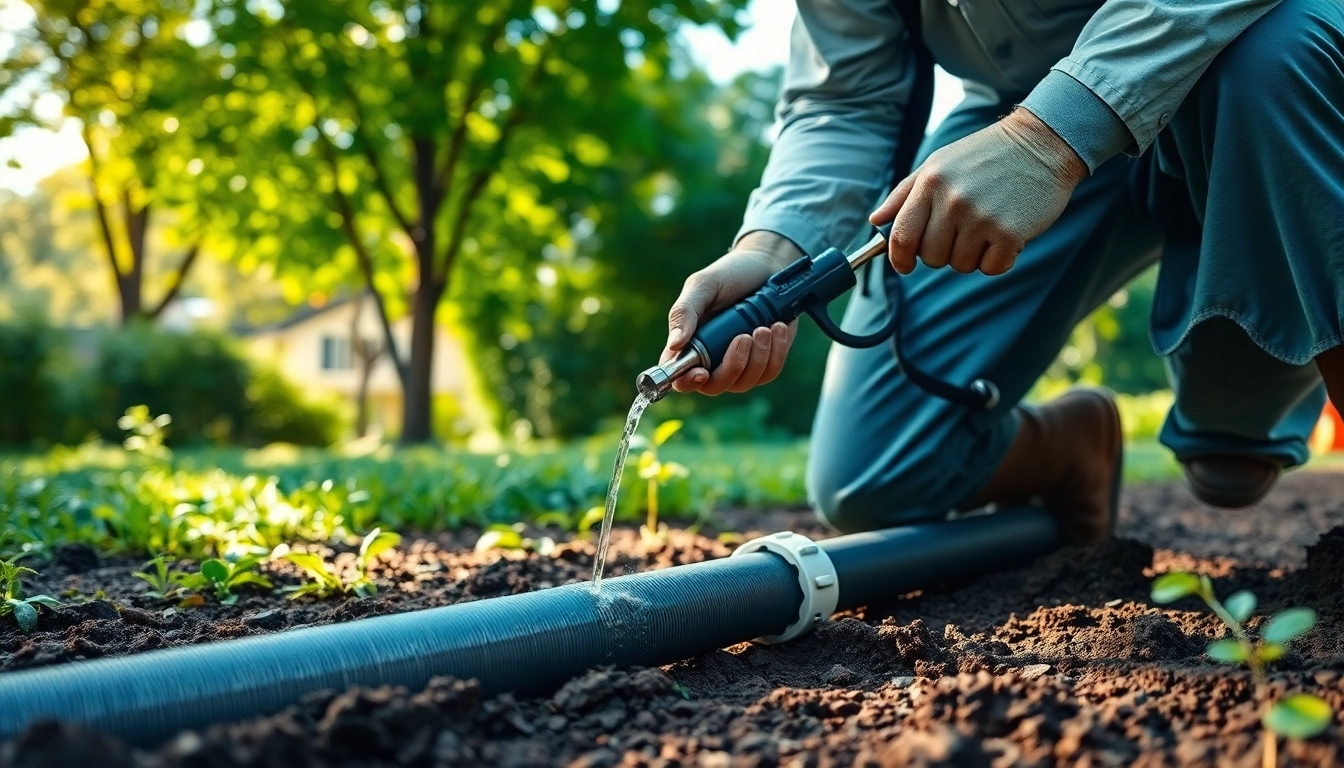Understanding Termite Reticulation Systems
In regions where termites pose a significant threat to wooden structures, termite reticulation system refills have become a popular preventive measure. These systems are designed to deliver insecticide around a property through a network of underground pipes, ensuring comprehensive protection against termite invasions. By strategically combating these pests, homeowners can safeguard their investments while minimizing the risk associated with infestations.
What is a Termite Reticulation System?
A termite reticulation system consists of a series of interconnected pipes installed beneath the soil around a property. The design allows for the efficient distribution of chemical insecticides designed to eliminate termites that might attempt to invade the building. The chemicals used vary in composition and longevity, which can affect how frequently refills are needed.
Components of a Reticulation System
The key components of a termite reticulation system include:
- Pipes: These underground pipes are laid around the foundation of the structure, usually at a depth of about 30 to 40 centimeters.
- Access Points: Specialized access points are integrated into the system, allowing pest control professionals to refill or replace chemicals when necessary.
- Chemicals: Various chemical formulations are used to deter and eliminate termites. These may include liquid termiticides or bait systems.
Benefits of Installing a Reticulation System
Investing in a termite reticulation system provides several advantages:
- Continuous Protection: Unlike conventional termite barriers that may deteriorate over time, a reticulation system provides continuous treatment with regular refills.
- Targeted Application: The system facilitates targeted application of chemicals in areas susceptible to termite activity, optimizing treatment efficacy.
- Less Disturbance: Installation is typically less invasive than exterior treatment options, as it requires minimal disruption to landscaping.
How Often Should You Perform Refills?
Understanding refill intervals for your termite reticulation system is crucial for maintaining an effective barrier against termites. Various factors contribute to these intervals, including the type of chemicals used and environmental conditions.
Typical Refill Intervals for Various Systems
Generally, termite reticulation systems need refilling every 3 to 8 years, depending on the active ingredients in the insecticides. Systems utilizing more durable chemicals may require less frequent refills, while those relying on shorter-lived substances tend to need replenishment sooner.
Signs Your System Needs a Refill
There are several indicators that your reticulation system requires a refill:
- Increased Pest Activity: Observing signs of termite activity such as discarded wings or mud tubes indicates that your system may lack sufficient protective chemicals.
- Soil Displacement: If the soil around the access points appears disturbed or has settled, it may suggest a compromise in the chemical barrier.
- Routine Inspections: Annual inspections can help determine if the chemical levels are adequate and if a refill is necessary.
Factors Influencing Refill Frequency
Several factors can influence how often you need to refill your termite reticulation system:
- Type of Termiticides: Different chemicals have varying lifespans and effectiveness, directly affecting the refill schedule.
- Environmental Conditions: Weather events, moisture levels, and shifts in the landscape can impact the effectiveness of the chemicals over time.
- Soil Composition: Soil types may absorb chemicals differently, influencing how long they remain effective.
Cost of Termite Reticulation System Refills
The cost of refills for a termite reticulation system can vary widely based on several factors, including geographic location, the complexity of the system, and the chemicals used.
Average Pricing for Refills
Generally, homeowners can expect to pay between $150 and $500 for professional refills of their termite reticulation systems. The specific pricing will depend on local market rates and the service provider’s expertise.
What Affects the Overall Cost?
Multiple factors may influence the total cost for refills:
- Brand of Chemicals: The price can vary significantly based on whether the chemicals used are commercial-grade or DIY options.
- Accessibility of the System: The ease of access to the system can impact labor costs; complicated installations may require more time and effort to refill.
- Provider Reputation: Established pest control companies may charge more due to their experience and track record of successful service.
Comparing Prices from Different Providers
It’s essential to obtain quotes from multiple pest control providers to ensure you receive competitive pricing for your termite reticulation system refills. When comparing prices, consider not only the cost but also the reputation, service quality, and warranty offered by the providers.
DIY vs Professional Refilling
Many homeowners contemplate whether to attempt refilling their termite reticulation systems themselves or to hire a professional service. Understanding the pros and cons of each approach can help inform your decision.
When to Consider Professional Assistance
Opting for professional assistance is advisable when:
- You are unfamiliar with termite control products and their applications.
- The system is significantly deteriorated and requires more than just a simple refill.
- Local regulations require pesticide application to be performed by certified professionals.
DIY Refilling: Pros and Cons
While DIY refilling may save costs, it comes with risks:
- Pros:
- Cost savings on labor fees.
- The ability to tailor refills according to personal schedules.
- Cons:
- Potential for improper application, leading to ineffective pest control.
- Liability for misuse of chemicals and possible health risks.
Essential Tools for DIY Refills
If you decide to proceed with a DIY refill, having the appropriate tools is crucial:
- Injection Equipment: Tools specifically designed for injecting chemicals into the reticulation system.
- Protective Gear: Gloves, masks, and goggles to ensure safety when handling pesticides.
- Access Point Tools: Equipment to safely open and close access points without causing damage.
Best Practices for Maintaining Your Reticulation System
Maintaining your termite reticulation system is vital for ensuring ongoing protection. Regular maintenance checks can help you identify potential issues before they escalate into costly repairs.
Routine Inspections and Maintenance Tips
Perform regular inspections of your reticulation system to check for:
- Visible Damage: Look for cracks in access points and exposed pipes.
- Soil Erosion: Assess any soil displacement that may compromise the system’s integrity.
- Pest Activity: Monitor for signs of termite activity near the boundary of the treated area.
Common Mistakes to Avoid
When maintaining your termite reticulation system, steer clear of these common pitfalls:
- Neglecting regular inspections and refills.
- Using unapproved chemicals that do not adequately protect against termites.
- Ignoring local regulations concerning pesticide application.
Long-term Care for Efficiency and Longevity
To extend the life of your termite reticulation system:
- Follow Manufacturer Guidelines: Adhere to recommendations for chemical types and refill intervals.
- Get Professional Evaluations: Schedule regular inspections by qualified pest control professionals to ensure system integrity.
- Monitor Environmental Changes: Be reactive to changes in the surrounding environment that could affect soil composition or moisture levels.
Conclusion
Termite reticulation system refills are vital for maintaining a robust defense against termite infestations. Understanding the mechanics of these systems, the appropriate refill schedules, and the costs involved can empower homeowners to make informed decisions. Whether opting for professional services or managing refills independently, the emphasis should always be on monitoring, maintenance, and timely refills to maximize efficacy and safeguard against one of the most destructive pests.



